
But this time you'll see a few more pawns on the board.
If you don't remember the last two lessons on Kings and Pawns you might like to go back and do them again before you start this one.

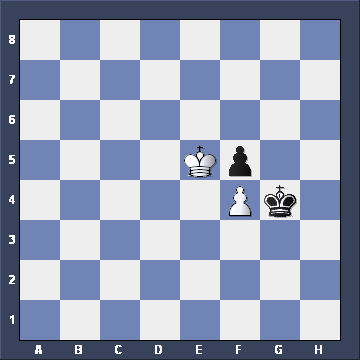
|
For your first question, perhaps you'd like to tell me what's happening in this position? White's winning White's winning Black's winning Black's winning It's a draw It's a draw I haven't got a clue I haven't got a clue 

|

|
In this position White has TWO moves that draw - everything else loses. Remembering what you've just seen, can you find one of the DRAWING moves?  




|

|
If White moves his King to d5, Black has one way to win, one way to draw and two ways to lose. Can you find his WINNING move?
 Kh4-g4 Kh4-g4
 Kh4-g3 Kh4-g3 Kh4-h5 Kh4-h5
 Kh4-h3 Kh4-h3 

|

|
This time White has two pawns against one. What should he play here?  




|
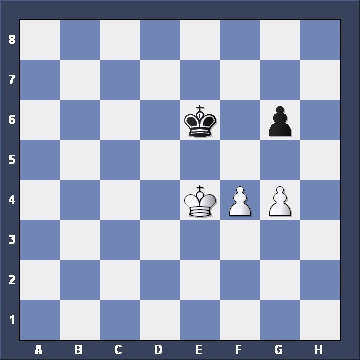
|
In this position I'd like you to consider the moves f4-f5+ and g4-g5. Only f4-f5+ wins Only f4-f5+ wins Only g4-g5 wins Only g4-g5 wins Both moves win Both moves win Neither move wins Neither move wins

|
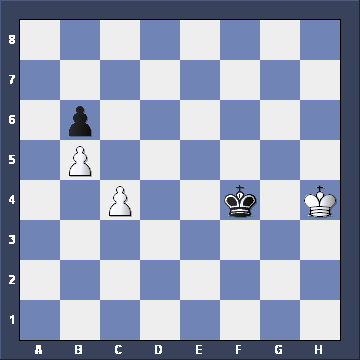
|
Time for something a bit different - and another question. What would you suggest White played in this position?  




|

|
The idea of SACRIFICING to get an unstoppable PASSED PAWN is very important in King and Pawn endings. Here's a more complicated example. It's White's move.  




|
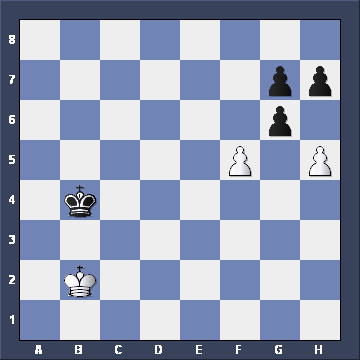
|
The winning move is indeed g5-g6, but the clever stuff happens next move. If Black plays f7xg6 we reach this position. How can White force a PAWN PROMOTION?  




|
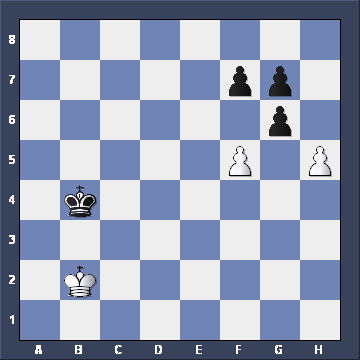
|
And, just for the sake of completion, tell me what White would play if Black took with the h-pawn instead after g5-g6.
 




|

|
It was easy that time, wasn't it? The same thing again, but on the other side. This time White forces home a Pawn by playing f5-f6 first, and, if Black takes, then h5-h6. 
|
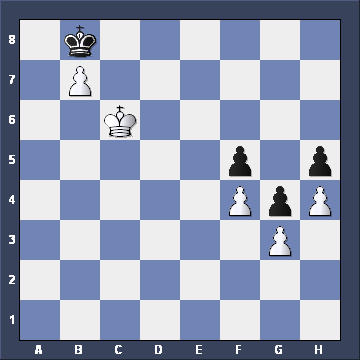
|
What do you think's going on here?  White's winning White's winning It's a draw It's a draw Don't know Don't know Don't care Don't care

|

|
|